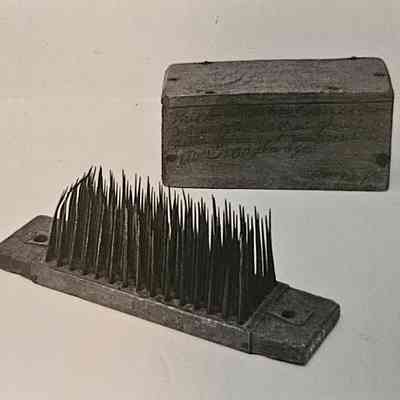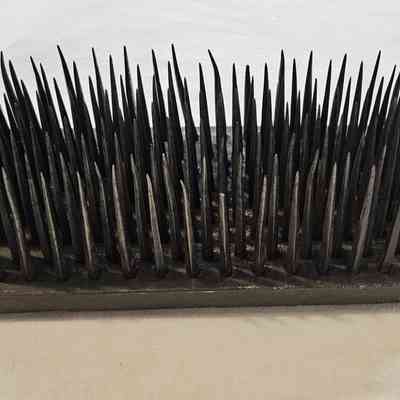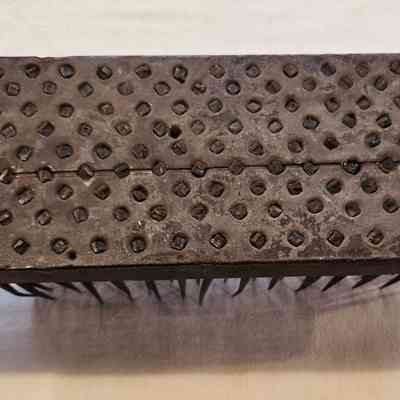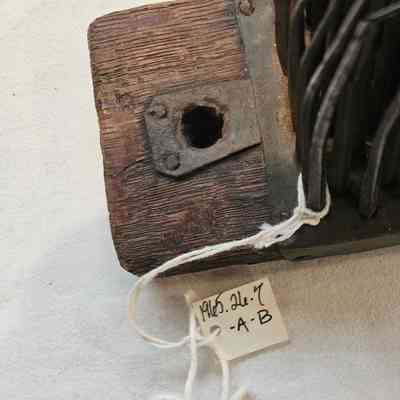Hetchel and Cover
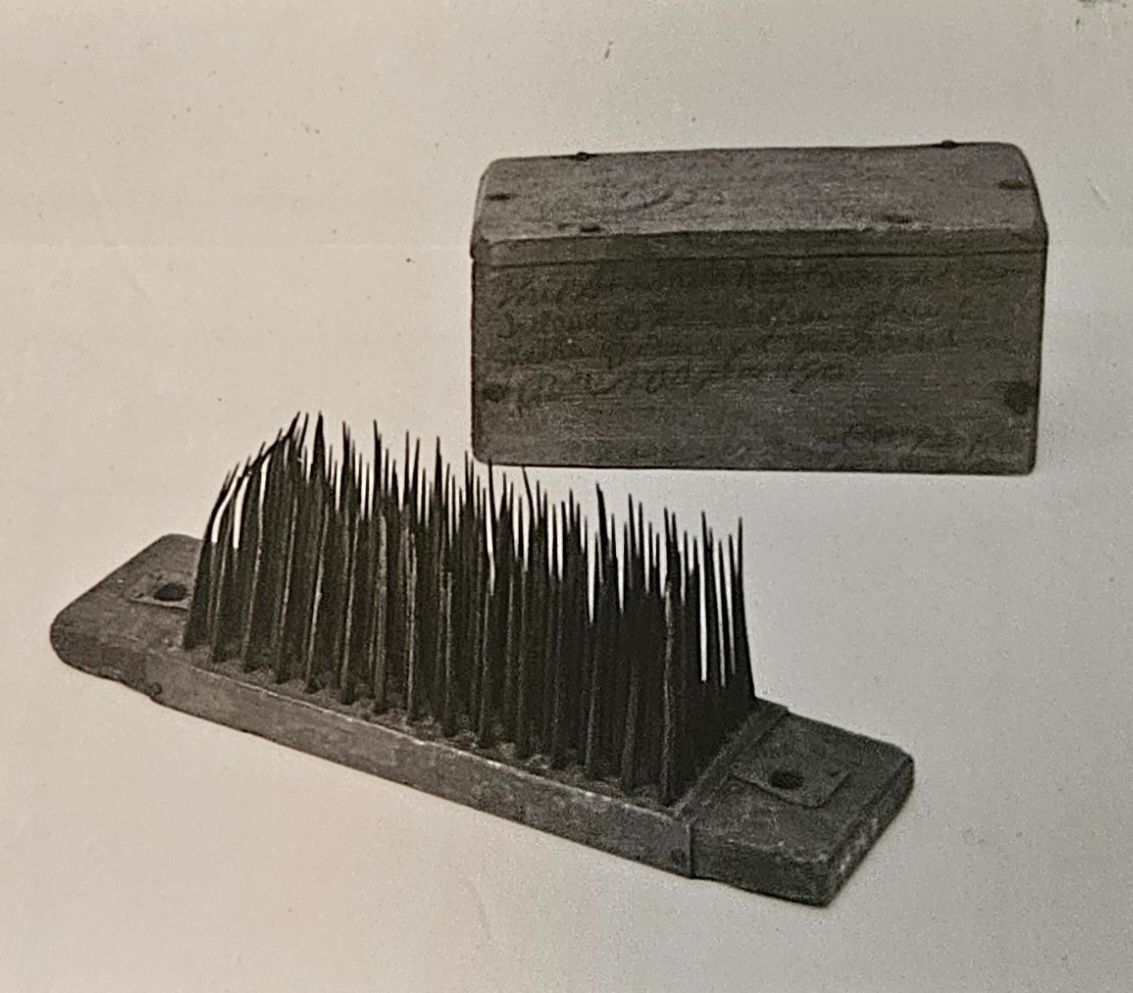
Hetchel and Cover
The image depicts a vintage flax hetchell. The tool features a wooden base with numerous sharp, metal spikes arranged in an orderly fashion. It is paired with a rectangular wooden cover that likely serves to protect the spikes when not in use. The wood appears aged, showcasing a weathered texture, and has writing etched on the cover.
Name/Title
Hetchel and CoverEntry/Object ID
2017.01.01Description
Hetchel (hackle) with cover.Use
Separating fibers from the stems of flax plants, in order to be processed into thread or yarn.Context
Before the Industrial Revolution, textiles were made by hand using relatively small, mostly wooden machines and tools powered by human labor.Collection
American Textile History Museum CollectionMade/Created
Artist Information
Artist
DavisAttribution
Written in pencil on top of the cover" "This Hackle by Mr. Davis / and is over 100 years old / given / to me By J---byel McMillen / 1900." On the side: "This Hackle Was Brought from / Ireland B M ____ Isan Grand / Father of B----d McMillen / over 100 years ago / CHR."Date made
circa 1750 - circa 1850Time Period
19th CenturyPlace
Country
IrelandContinent
EuropeEthnography
Cultural Region
Country
IrelandContinent
EuropeCulture/Tribe
Irish
Inscription/Signature/Marks
Location
CoverTranscription
Written in pencil on top of the cover" "This Hackle by Mr. Davis / and is over 100 years old / given / to me By J---byel McMillen / 1900." On the side: "This Hackle Was Brought from / Ireland B M ____ Isan Grand / Father of B----d McMillen / over 100 years ago / CHR."Language
EnglishLexicon
Nomenclature 4.0
Nomenclature Secondary Object Term
HatchelNomenclature Primary Object Term
Comb, TextileNomenclature Sub-Class
Textile Manufacturing EquipmentNomenclature Class
Textileworking T&ENomenclature Category
Category 04: Tools & Equipment for MaterialsOther Names and Numbers
Other Names
Hackle
Hatchel
